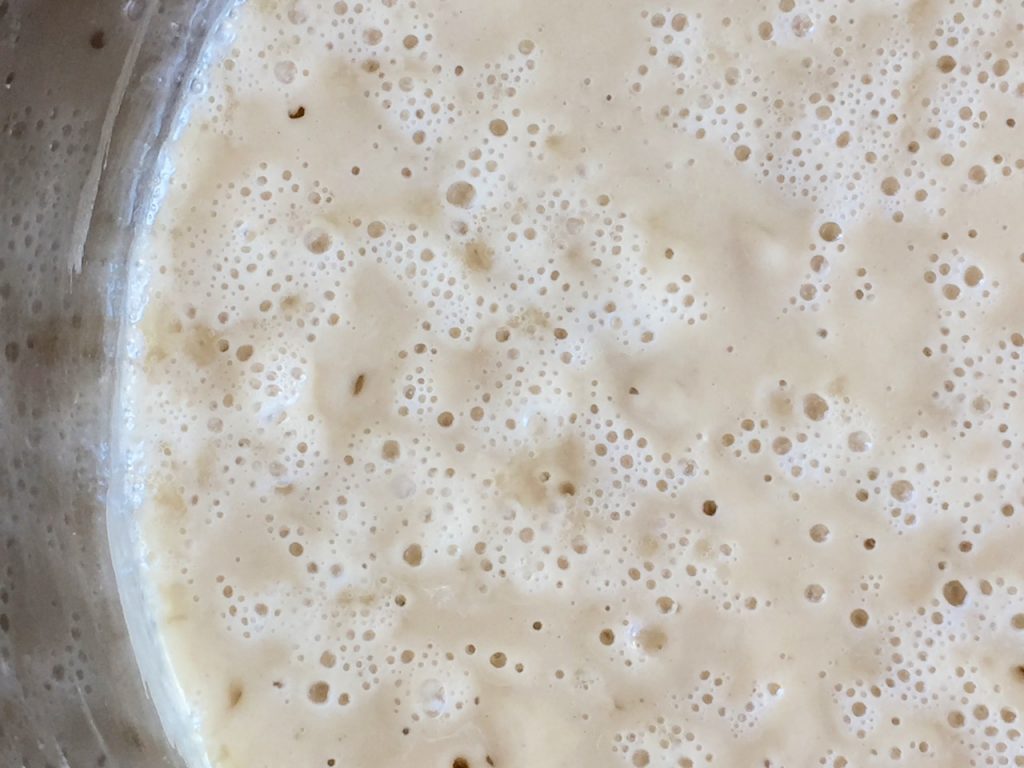
This post contains affiliate links. If you click through and make a purchase, the Friendship Bread Kitchen may earn a small commission at no additional cost to you. Thank you for your support!
If you love baking Amish Friendship Bread every now and then, but don’t want to maintain a starter on your countertop, there’s an easy solution: freeze your starter!
Follow these steps and you’ll have starter on hand, ready to use when YOU want to bake:
- Prior to freezing, your starter needs to be thriving and active, which means it should have been fed in the past 24 hours (feeding = reduce your starter to 1 cup, then add 1 cup flour, 1 cup sugar, 1 cup milk. Stir well). Prior to that, your starter should have had plenty of bubbles. IMPORTANT: Freezing old starter or starter that’s no longer active means you’ll have the same blah starter when you defrost it later. You don’t want that. Make sure your starter is in good shape so it can handle the deep freeze.
- You have to be feeding your starter at the proper ratios. Underfeeding your starter means your starter might be hungry going into the freezer, which means it’ll be hungry (or defunct) coming out. Learn more about this here.
- Use a one-gallon Ziploc freezer bag for every one cup of starter you’ll be freezing. Prepare the bags by writing AMISH FRIENDSHIP BREAD STARTER on the front in permanent marker, and put the day’s date.
- Mix your starter well, then add one cup (about 280 g) to each bag. I usually add a little extra, because I know I won’t be able to squeeze all of it out of the bag later.
- Remove the air from the bag, seal well, then roll or fold each bag up for easy storage.
- Pop into your freezer. That’s it!
Some other tips:
- The starter won’t freeze like ice–it’ll be more like the consistency of a slushy.
- You don’t need to take it out and mash the bag. Just leave it until you’re ready to use it.
- If you want to save a lot of starter, I still recommend freezing in one-cup portions. It makes it easier to gift, too, if someone calls to ask for some starter. You don’t want to have to thaw an entire batch just to get a cup out.
- Don’t refreeze thawed starter. Use it, maintain it (start the 10-day cycle again) or discard.
- How long can you save your starter in the freezer? Good question. Keeping in mind that I don’t run a food lab here, I recommend freezing your starter for up to 9 months. It makes sense that your starter would degrade over time, so that’s my conservative recommendation. Other factors include the quality of your bag (freezer quality vs something thinner), no damage to the bag (rips or tears), and a properly temperature-controlled freezer (max 0°F). That being said, I’ve revived frozen starter that was three years old and it came right back to life.
When you’re ready to bake, or the day before (my preference), just follow the directions to revive your starter.
Tutorial – Storing (Freezing) Amish Friendship Bread Starter for Future Use
Too much starter and no one to give it to? Need to take a break from baking? There's an easy solution: freeze your Amish Friendship Bread starter and save it for later!
Ingredients
- Amish Friendship Bread starter recently fed
- Ziploc bags freezer quality, one gallon
- Sharpie pen black, permanent
Instructions
- Prepare your one-gallon Ziploc freezer bags first. Using a permanent pen like a black Sharpie, write AMISH FRIENDSHIP BREAD STARTER on the front, plus today's date.
- Using an active Amish Friendship Bread starter that's been recently fed (past 24 hours), stir the stater well, and then remove 1 cup at a time (approximately 280 grams).
- Pour the 1 cup of starter into a prepared one-gallon Ziploc freezer bag. Use a spatula to make sure you get a full cup of starter in the bag. NOTE: I usually pour in up to 1⅛ cup (1 cup + 2 tablespoons) as I know I'll lose some of it to the sides of the measuring cup or when I remove it from the bag when I'm ready to use it.
- Shake the starter so it's at the bottom of the bag. Gently begin removing the air by slowly rolling the bag from the bottom. When you get to the top, seal the bag completely. You can use a rubber band to hold it together.
- Pop it into your freezer. Done!
Notes
- The starter won’t freeze like ice–it’ll be more like the consistency of a slushy. Once you put it in the freezer, you can leave it there until you’re ready to use it. You don’t need to take it out and mash the bag.
- If you want to save a lot of starter, I still recommend freezing in one-cup portions. It makes it easier to gift, too, if someone calls to ask for some starter. You don’t want to have to thaw an entire batch just to get a cup out.
- Don’t refreeze thawed starter. Use it, maintain it (start the 10-day cycle again) or discard.
- How long can you save your starter in the freezer? Keeping in mind that I don’t run a food lab here, I recommend freezing your starter for up to 9 months. It makes sense that your starter would degrade over time, so that’s my conservative recommendation. Other factors include the quality of your bag (freezer quality vs something thinner), no damage to the bag (rips or tears), and a properly temperature-controlled freezer (max 0°F). That being said, I’ve revived frozen starter that was three years old and it came right back to life.
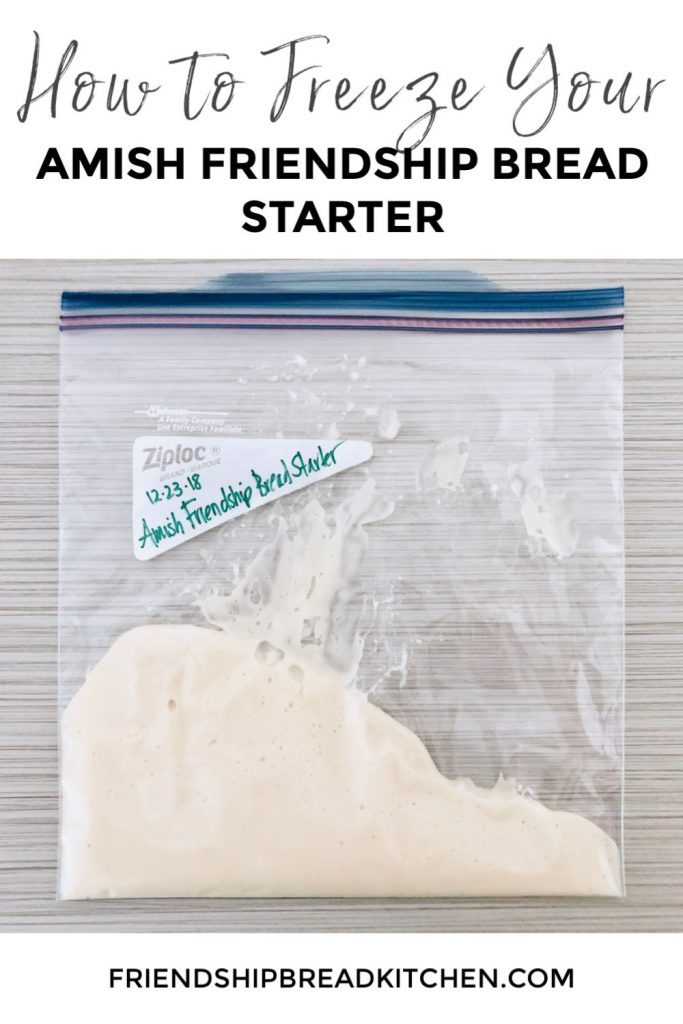
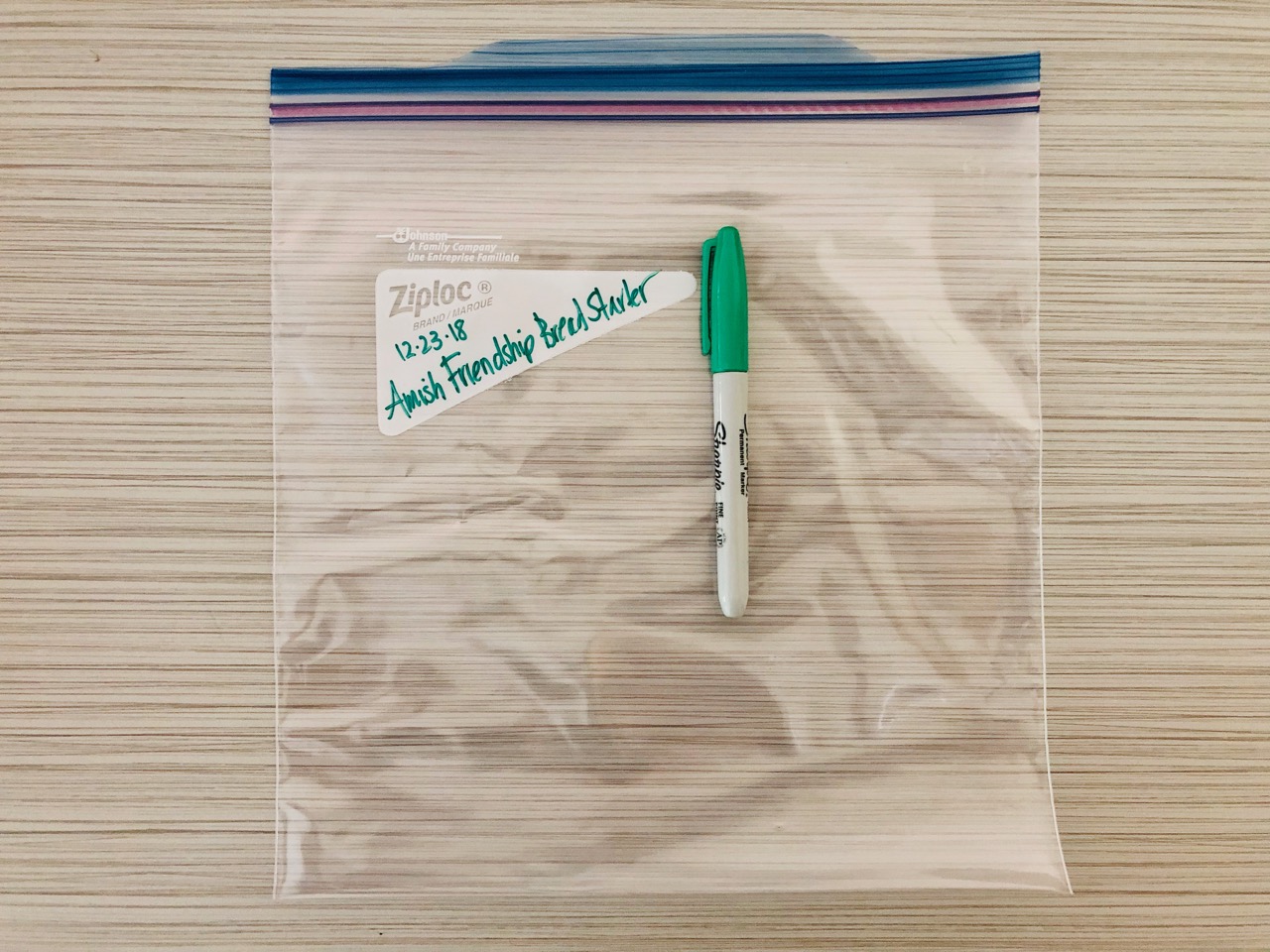
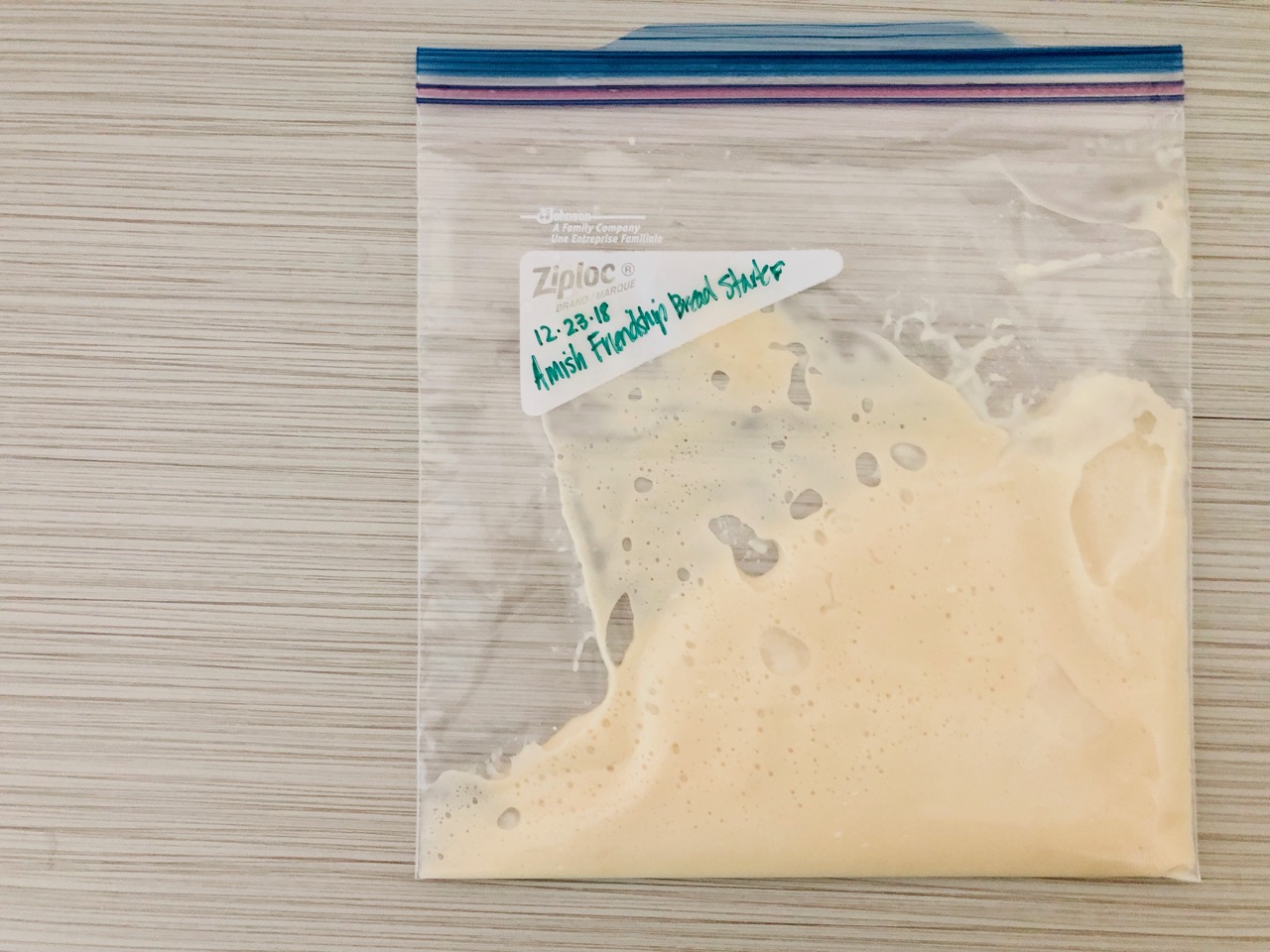
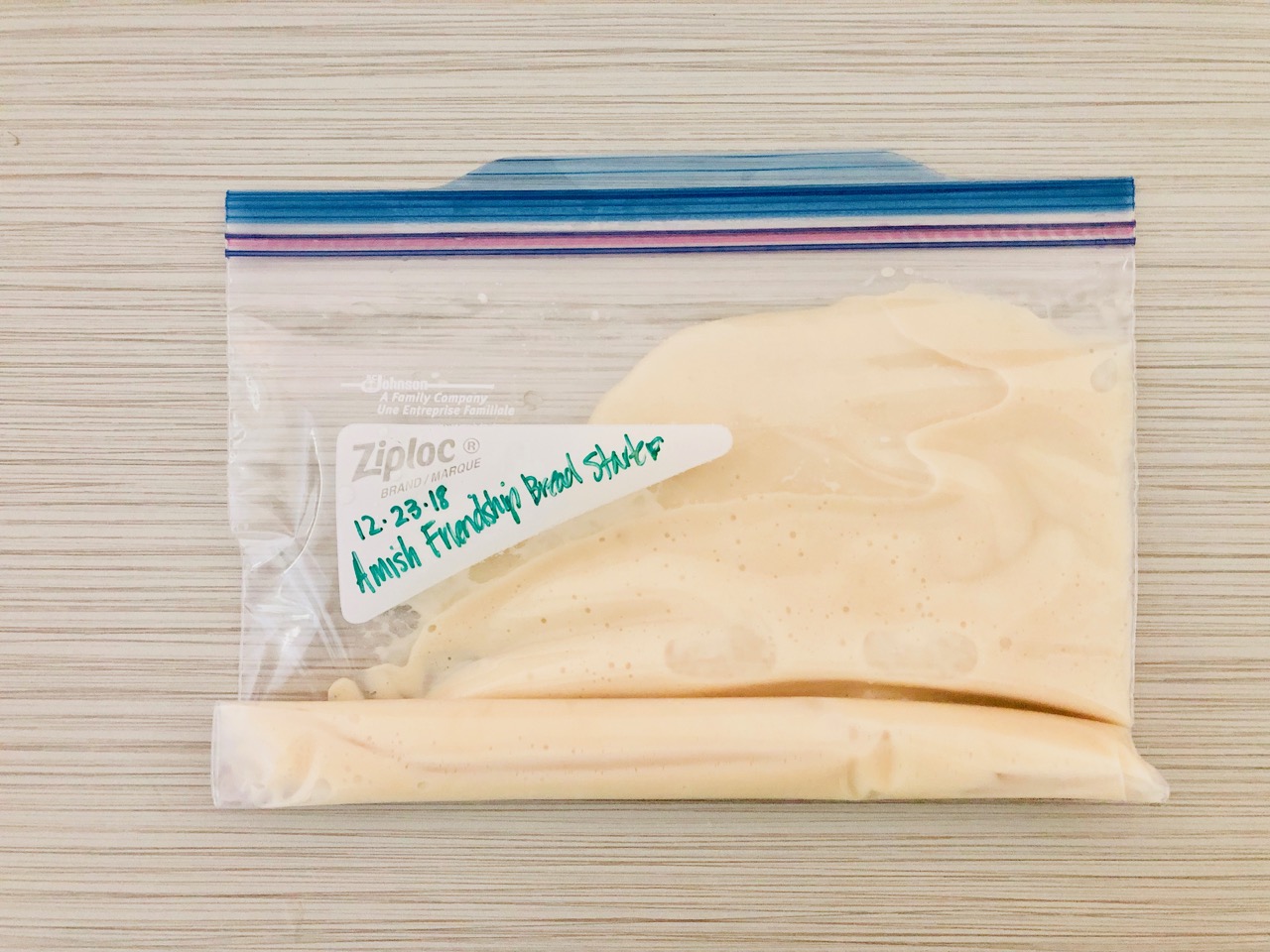
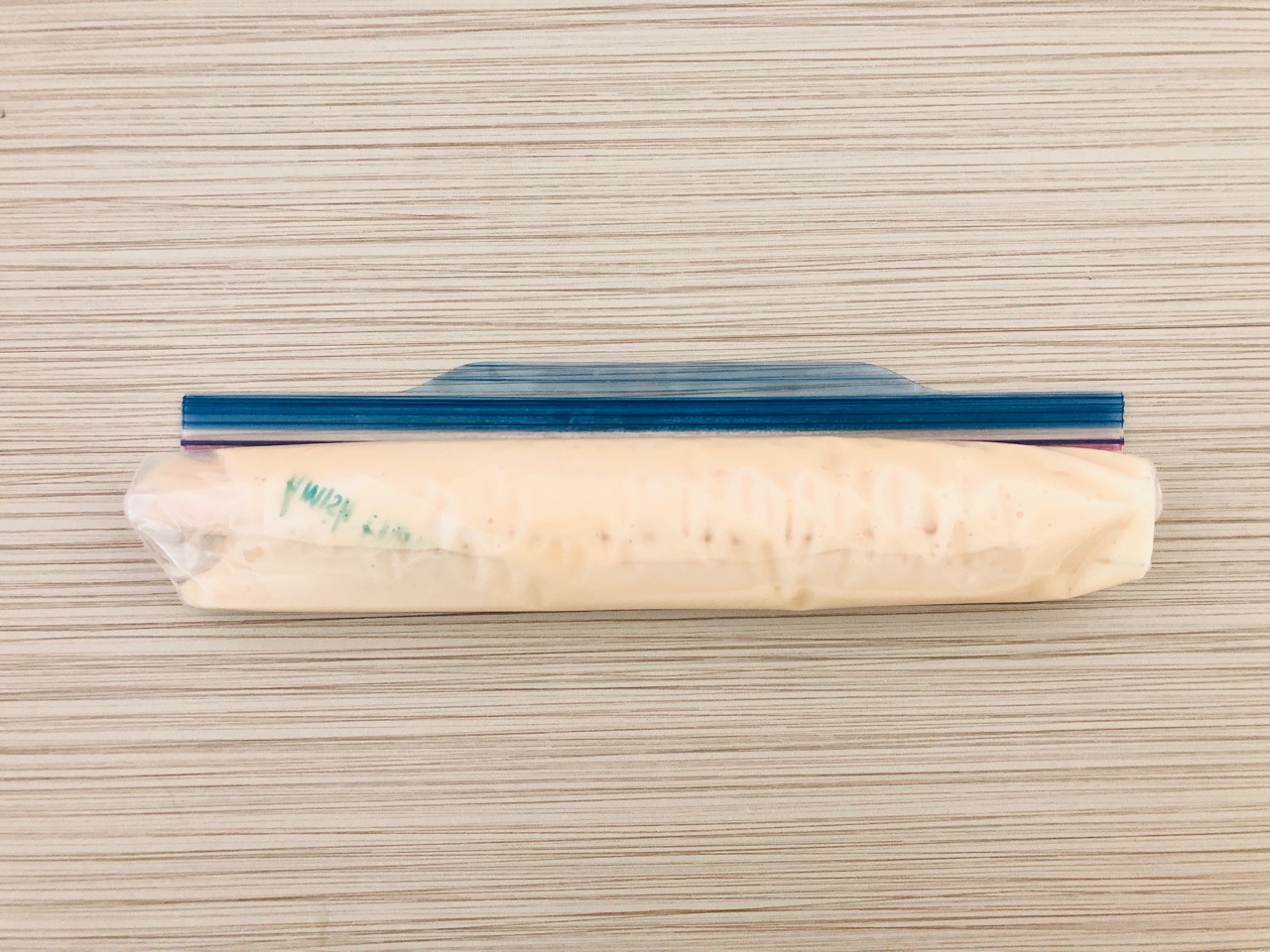
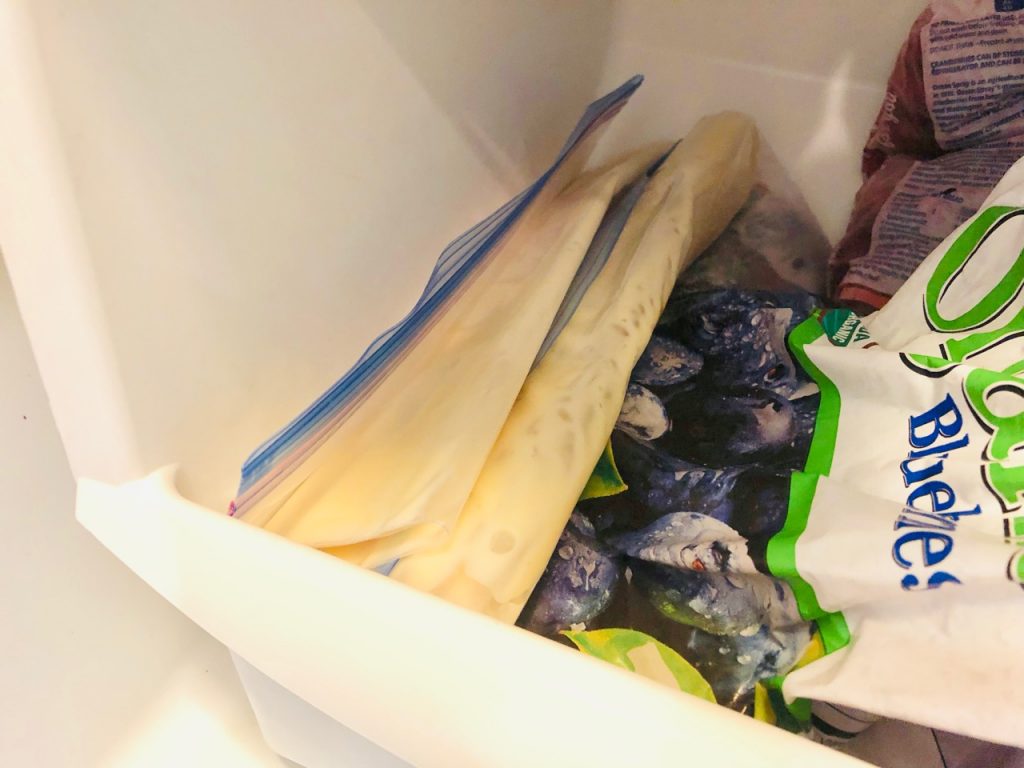
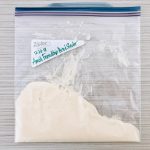
When you get down to the last 2 cups, bake one and grow one.
When I thaw a bag of the starter can I use that 1 cup portion to bake with immediately or do I need to use it as a new starter a begin the 10-day process? My goal is to be able to freeze in 1 cup portions on days when I reach the 10th day but do not have time to bake that day. I want to throw it in the freezer and bake whenever I have the time.
Same question! Any answers yet on this?
When you get down to the last 2 cups, bake one and grow one.
I use the potato flake starter, will this freeze also?
Hi Carole! We haven’t found that the potato flake starter consistently revives after being frozen, but you can always experiment using these instructions and see if it works. Happy baking!
If I froze some starter and I want to thaw it and keep it going for another cycle of 10 days are you able to refreeze after that 10 days?
Hi Sarah! Yes, you definitely can refreeze it after the 10 day cycle.
On day 10 when you separate starters, you give starters away or put 3 in freezer. The one I would keep out , that would be day 1. On that day do you add anything to that starter ?
Hi Beverly! No, since you already fed your starter before you separated it, it should be just fine!
Today’s Day 10 and I want to bake all of the starter. However, plans changed and I’d like to wait until tomorrow. Can I mash the bag an extra day and bake tomorrow?
Yes, you definitely can, Janet!
Soooo my “thawed” day six starter has now been on the counter for a week by unforeseen reasons …is it still good to go ahead and just bake with it now????
Probably best if you feed it before you use it, because it’s probably hungry. If your starter doesn’t get fed, the yeasts will die off and then you risk the starter contaminating. It takes a lot of neglect for this to happen, LOL, but it does happen so I’d recommend giving it a good stir, reduce the starter to 1 1/4 cup, and give it another Day 6 feeding. You can then either bake with it within 24 hours (give it a few hours to start metabolizing everything), or wait until Day 10. 🙂
The recipe given to me had instructions to add q cup each flour, sugar and milk on Day 5, but to add 1.5 cups each of flour, sugar and milk to my starter bag on Day 10. I baked in Fay 10, and now have 4 new bags of starter with 1 cup each. I want to freeze and save after feeding in Day 5. . If so, do I add my Day 5 ingredients and re-potion into 1 cup portions to freeze? The first set of bread and muffins were terrific. I added dried cranberries and mini chocolate chips! Yum!
I am about to bake my first bread from starter that a friend gave me as now day 10. When I freeze the extra starter and put today’s date on the bag, does today count as Day 1 when I take the starter out of the freezer. Or is the day I take it out of the freezer Day 1?
Hi Susan! There’s a couple choices you have when you take your starter out from the freezer. Here’s a great tutorial on them: https://www.friendshipbreadkitchen.com/tutorial-reviving-frozen-amish-friendship-bread-starter/ Happy baking!
If I’m on day ten, feed, divide, and bake my two loafs. Then Freeze one of the new starters on its day one. What day is it on when I thaw it?
Hi Angela! You can thaw your starter whenever you like! Here’s a great post on what to do when you’re ready to thaw it: https://www.friendshipbreadkitchen.com/tutorial-reviving-frozen-amish-friendship-bread-starter/
Today is Day 10, but I don’t want to bake for another 3 days. Can I do this? What do I need to do with the dough? (I think I posted this comment on the wrong feed earlier. Sorry!)
Hi Faith! You can definitely wait to bake. If your starter has grown a lot, we would still recommend that you feed/separate your starter so you’re not dealing with an unruly amount of starter. You could freeze your extra starters or share them, and bake with the starter you keep on the counter when you want to. Here’s a good tutorial on when you can bake with your starter: https://www.friendshipbreadkitchen.com/faq-how-soon-can-i-bake-use-my-amish-friendship-bread-sourdough-starter/
Is it fed day 5 and day 10 or just day 5? In other words, can I freeze at day 10 after I have mixed final ingredients and divided it starters? or do I then have to wait until day 5.
Susan
Hi Susan! You do feed your starter both on day 6 and day 10, so you can definitely freeze your starter on day 10! The most important thing to remember is that you want your starter to be active and fed within the last 24 hours before you freeze it! 🙂
After I’ve added the 1/2-cup portions of flour, sugar, and milk on day 10 and divided the starter into 1-cup portions in ziploc bags, is that it for day 1, or do I have to add 1 cup of flour, sugar, and milk? The volume of the 1 cup of starter is so much less than when initially starting the starter.
Storage is key for any starter. We make a baking mix that we use for biscuits that we store for months. If you don’t store iut right, it won’t rise like it should and all of that flour and shortening was wasted,
This tutorial is very helpful! Sometimes I get way ahead on my started and baked goods and need to take a break from started to use up what I have baked. I actually had to throw some out before I found your site – thank you for this site!
I love having frozen starter in the freezer. Recently my active starter went flat, so I just popped one out fo the freezer and restarted it. It was perfect.
Have some in the freezer now! Also more ready to bake tomorrow. Tis the season you know!
I love that I can freeze some for later. So helpful and I’ve got some in the freezer now.
I was really happy tofind out I could freeze my starter. I don’t have anyone to “share” it with (everyone says no thanks!).
Freezing the start is excellent and needed!
Learning about freezing Amish Friendship bread would be the most helpful video for me.
This starter is the most helpful for me, as I get bored with things easily but don’t want to have to start with a brand-new starter every time. Didn’t know before finding this site that freezing was even possible!
Interesting! I had no idea I could freeze the starter.
I totally thought you had to use it or lose it. This is amazing that I can freeze it.
This is the one that helps me the most because I always make extra
Love that you can freeze it! I always get to the point that I don’t want to bake anything with it for a while. This is a great option!
Just learned not to refreeze starter which I have better idea to freeze in1 cup size. Thanks for info!
How to freeze starter has been so very helpful.
Great tutorial on freezing your starter. Now I have starter in my freezer just in case.
The tutorial that I have found most helpful has been how to freeze and store the starter, but all of them have been helpful to me in my sour dough journey.
This is the best info ever! Sometimes I just get tired of starter and need to save it for later.
This is great I had no idea starter could be frozen for later use.
the tutorial about freezing and thawing the starter was very helpful, I have one in the freezer for 5 years and it worked out fine.
This has helped me sooooo much. I usually don’t do much baking before the fall so being able to freeze the batter makes it easy to make some bread last minute. I usually store 10-12 bags in the freezer. Love this stuff and so do everyone I bake for.
It’s great to be able to freeze all the starter when you can’t use it right away. Didn’t know anything about freezing it
Having what seemed like a sinkful of starter I was happy to find this tutorial and freeze some for future use! Can’t wait to try it out! Thanks!
Useful instructions. I’ve had bad luck freezing before and now I know it’s because I didn’t know enough to take steps to ensure it would be good when I needed it.
I froze one a few years ago and took it out a couple of weeks ago and didn’t realize it had been in the freezer for about 5 years. It took a while to thaw and “wake” up, but it did good, I’m on the second round, will be baking on Monday and sharing what I don’t bake. also put one in the freezer for who knows how long.
I’d like to keep more than one cup of starter. I began my own starter and have 3 cups I was hoping to keep growing. Do I need to change my feeding ratios? I’m also likely to bake on day 6 as well as 10. Thoughts? I was so excited to find all of the info and recipes on your site!
Yes, you have to keep the ratio to 1 cup starter = 1 cup EACH flour, sugar, milk whenever you do a feeding. Otherwise your starter won’t be as robust and will start to die off. We have a great tutorial about that here: https://www.friendshipbreadkitchen.com/tutorial-maintaining-a-healthy-amish-friendship-bread-starter/
Have you ever tried dehydrating some starter to save for later? I freeze mine with great success, take it out once a year, feed it and make as much starter as I want to have in the freezer for throughout the year. We may be moving and taking even frozen starter probably won’t work out but I’d love to keep my starter going. I can’t find anywhere or anyone talking about dehydrating it like you can a sourdough starter but I’m guessing it’s because of the milk and sugar in the friendship bread starter that might make it a no-no? Have you tried it or know if it won’t work? I appreciate your work! Thank you!
Hi Jenni! That has been on my mind for ages … seeing if it’s possible to dry AFB starter for future use. I’m actually going to give it a try in my test kitchen at some point, but I don’t have an answer for you yet. I can’t comment on the stability of the milk proteins either (or spoilage), and if that would be problematic later. The sugar shouldn’t be a problem, though — it’s the milk I’m not sure about. Even if it dries properly, it may not be safe to use unless it’s stored in an airtight jar or bag AND stored in the fridge of freezer (which wouldn’t work for you). The good news is that AFB is hearty, so if you’ve frozen active AFB, then take it out and pack it in your suitcase (check in!), it should be fine for a couple of days before you need to feed it and make sure it stays healthy. I have some starter that will be ready to go tomorrow, so I’ll try to dry it but again, I can’t say if it would be healthy to store long term in a dried form.
Can I freeze my bag after day 5 when I added the milk flour and sugar?
Hi Wendy, feeding day is usually Day 6, and yes! You can definitely freeze your starter as long as its within twenty-four hours of feeding. Happy baking!
I’m on day 6 and have an extra starter that I wasn’t able to give away. Instead of adding to it, can I just store it in the freezer like it is?
Hi Bonnie! It’s best to store the starter AFTER it’s been fed, so if you’ve fed it, yes! If you have too much starter and no one to give it to, and your freezer is overflowing, AND you don’t want to bake with the excess (pancakes are a great way to use up extra starter: https://www.friendshipbreadkitchen.com/chocolate-chip-pancakes/) then as much as it pains me to say it, discard the excess. It’s better to keep 1-2 cups of starter and feed it at the proper ratios than to have too much on hand and underfeed it. Hope this helps!
Can buttermilk be used instead of milk when feeding on 6th and 10th days?
Hi Linda! Buttermilk can be used to feed a variety of bread starters, although it is more effective in savory and sourdough starters. Buttermilk adds a stronger, more sour flavor to the starter that may affect how your bread tastes. If you have to substitute buttermilk for milk, you certainly can. We’ve also experimented with using buttermilk in place of starter in our No Starter (Starter Free) Amish Friendship Bread. (You can learn more about that here.) Happy baking!
How do you start a starter from the beginning??
Here’s the recipe, BJ: https://www.friendshipbreadkitchen.com/amish-friendship-bread-starter/